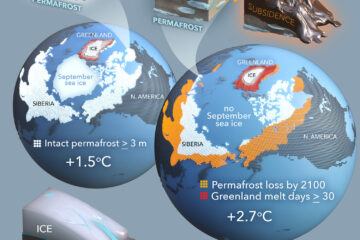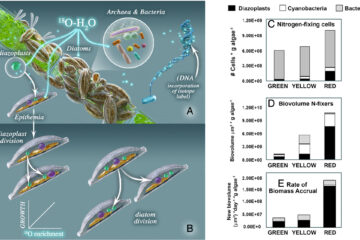Nitrogen inputs and losses in response to chronic CO2 exposure in a subtropical oak woodland
Rising atmospheric CO2 concentrations may alter the nitrogen (N) content of ecosystems by changing N inputs and N losses, but responses vary in field experiments, possibly because multiple mechanisms are at play. We measured N fixation and N losses in a subtropical oak woodland exposed to 11 years of elevated atmospheric CO2 concentrations. We also explored the role of herbivory, carbon limitation, and competition for light or nutrients in shaping the response of N fixation to elevated CO2. Elevated CO2 did not significantly alter gaseous N losses, but lower recovery and deeper distribution in the soil of a long-term 15N tracer indicated that elevated CO2 increased leaching losses. Elevated CO2 had no effect on nonsymbiotic N fixation, and had a transient effect on symbiotic N fixation by the dominant legume. Elevated CO2 tended to reduce soil and plant concentrations of iron, molybdenum, phosphorus, and vanadium, nutrients essential for N fixation. Competition for nutrients and herbivory likely contributed to the declining response of N fixation to elevated CO2. These results indicate that positive responses of N fixation to elevated CO2 may be transient and that chronic exposure to elevated CO2 can increase N leaching. Models that assume increased fixation or reduced N losses with elevated CO2 may overestimate future N accumulation in the biosphere.


